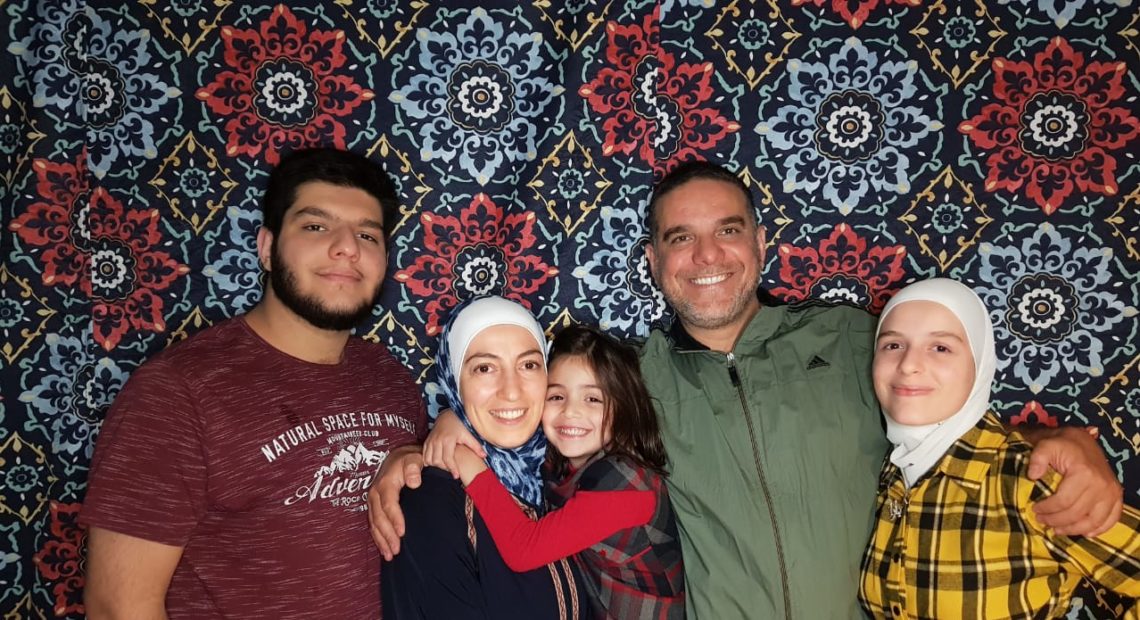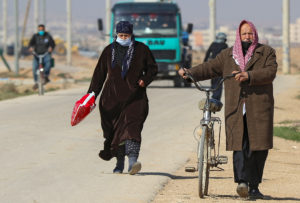The country has been a destination for Syrians, Lebanese, and citizens from other Arab countries since the late 19th century. Amid increases and decreases in the number of immigrants, Brazil has always remained as a safe haven during times of conflict.

São Paulo – The Arab immigration to Brazil has gone through moments of large and small influxes since the late 19th century. But it has never stopped. Directly related to exoduses ushered in by conflicts and instabilities in the source countries, the immigration is also linked to the presence of descendants in Brazilian cities and government initiatives to welcome them.
A professor of Contemporary History at the History Institute of the Federal University of Rio de Janeiro (UFRJ), Murilo Meihy says that there Arab immigration to Brazil is not recent. “It never ends; it’s cyclic and connected to the conflicts in the Middle East. Brazil is a destination as it already has an integrated network that keeps this influx alive,” he says.
A professor of History of Asia at the Federal University of São Paulo (Unifesp) and author of the book Imigração Árabe no Brasil: história de vida de libaneses muçulmanos e cristãos [Arab Immigration to Brazil: Life Story of Muslin and Christian Lebanese], Samira Adel Osman also notes the conflicts in the region have been the major driver for immigrants.

Refugees: Conflicts lead to exoduses
“Examples can be local or regional issues, such as when Christians came in the late 19th century due to the crackdown by the Ottoman Empire (which included Lebanon and Syria at the time) or religious conflicts among Druses and Maronites; world wars are another reason, as the poor living conditions and the presence of the European powers in the region drove other influxes. The Lebanese Civil War (1975-1990) can also be mentioned as a local factor, as can the Syrian Civil War that’s been ongoing since 2011,” says Osman. Over the last years, the Arab immigration to Brazil takes on another dimension: the refugees.
According to data gathered by the United Nations High Commissioner for Refugees (UNHCR) and made public by Brazil’s Ministry of Justice, in 2019 there was 79.5 million forcedly displaced people around the world, including 45.7 million internally displaced people; 20.4 million were refugees under a UNHCR mandate; 5.6 million under a United Nations Relief and Works Agency for Palestine Refugees (UNRWA)’s mandate; 4.2 million asylum seekers; and 3.6 million were displaced Venezuelans living abroad.
According to Brazil’s Ministry of Justice and Public Security, the number of Syrian asylum seekers in the country – most of them are Arabs – reached 429 in 2019. In the same year, the country received 229 asylum requests from Morocco and 196 from Lebanon.
ADUS Institute refugee service coordinator Laura Lopes says the NGO has recorded a large influx of Syrian refugees from 2013 to 2014, but this influx has decreased over the years. The reason, she says, could be financial as leaving Syria for Brazil has a higher cost than seeking refugee in closer countries, such as Turkey and Jordan.
“Brazil has adopted policies to receive Syrian refugees during the peak of the crisis and presented itself as a welcoming country. But there’s no structure for integration in our society,” says Laura. In 2020, 27 Syrian refugees were registered at ADUS, while 2013 and 2014 had seen 300 refugees assisted by the institute, which offers training courses, legal advice, and Portuguese classes, among other support activities.
Statistics
The number of Arabs that have migrated to Brazil is controversial. Osman mentions figures from the Brazilian Institute of Geography and Statistics (IBGE) showing that 1940 around 40,000 Syrian and Lebanese immigrants arrived in Brazil, a number that hasn’t stopped growing since.

Immigrants settled on the 25 de Março street: Statistics on the arrivals are controversial
“The statistics are controversial, particularly from the perspective of a historical evaluation of this migration flow. The major problem refers to the way these immigrants were registered, with no standardization. The official data may show them as Turkish, Arab Turkish, non-Arab Turkish, Syrians, Lebanese, Syrian Lebanese, Syrians and Lebanese, Arabs. We can only be sure that, from the late 19th-century to the end of the 1st World War they were registered as Turkish because the Ottoman Empire issued the passports. The source region (Lebanon or Syria) wasn’t always specified. Moreover, people from those places could also be Armenians or Jews,” says Osman.
Last July, the Arab Brazilian Chamber of Commerce (ABCC) released a survey carried out by Ibope Inteligência and H2R Pesquisas Avançadas on the Arab Immigrants. The study showed that in 2020 11.6 million Arabs and descendants lived in Brazil – 10% of them are immigrants, and 41% are grandchildren of immigrants.
The future
As it has occurred in the last couple of years, the Arab immigration to Brazil tends to continue, alternating between higher and lower influxes.
“Some regions of Lebanon, such as the Beqaa Valley have entire families in Brazil, with branches that have formed due to the instability in the country,” says Meihy. “And since this flow is historic, it can be expected to remain. After all, there’s a heritage involved, ties between both countries.”

Altinawi (L) with his family and friends: In Brazil people help each other
Meanwhile, those that are already here try and build a life. In 2013, the 48-years-old Syrian engineer Talal Altinawi (pictured above) came to São Paulo with his wife and two kids. He was one among so many refugees that had to leave their homes during the conflict that’s ravaged the country since 2011. He went through Lebanon before arriving in São Paulo.
“The advantage of being here in Brazil is that people really help each other and are pleased to so. That doesn’t happen in every country,” he says. Since arriving in Brazil, Altinawi has sold food on demand, opened a restaurant after an online crowdfunding, and then closed the restaurant two years later.
Altinawi lived in Brás, a district located immediately to the historic downtown. Now, in Campo Belo, he sells food to order in a process he describes as building his life in Brazil. “The downside here, and not only here, is that the financial crisis hinders our growth.” With the pandemic, difficulties increased: “We were getting steady, growing even, but the pandemic got in the way. We are not yet as we’d like to be, but we’re trying,” he says.
Despite the many challenges, Altinawi settled in Brazil. Now, his older children are 18 and 15. And the youngest, who was born in São Paulo, is six. “I’m going back to Syria one day to visit the country, but not to live there. I belong in Brazil now,” he says.
*Special report by Marcos Carrieri.
Translated by Guilherme Miranda
Source: https://anba.com.br/en/influx-of-arab-immigrants-to-brazil-remains-constant/
[Disclaimer]









